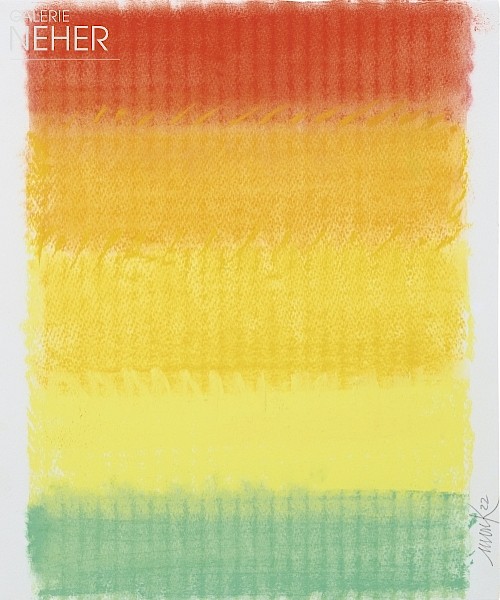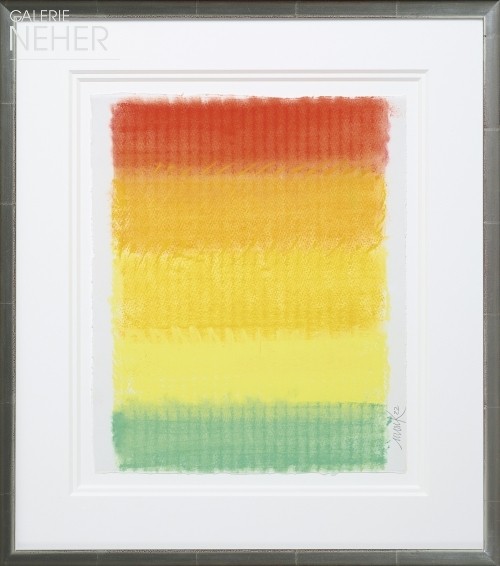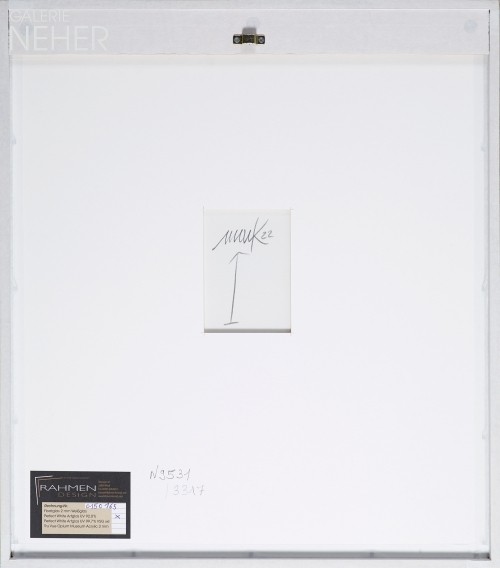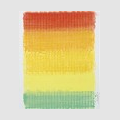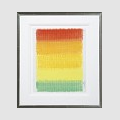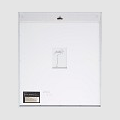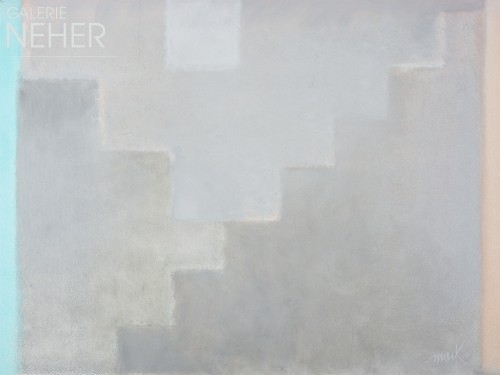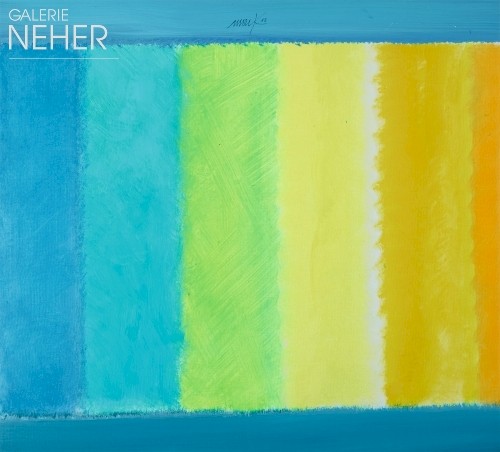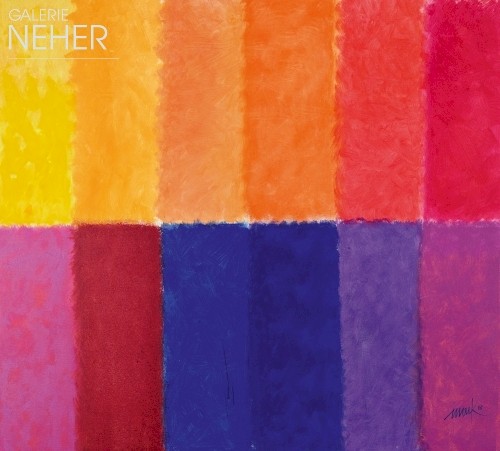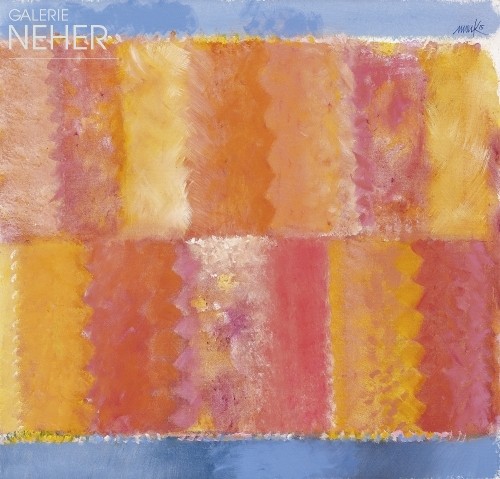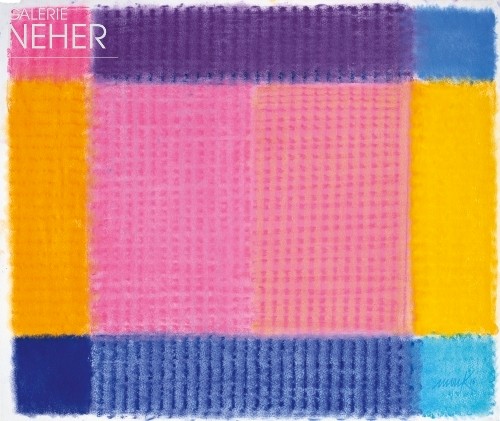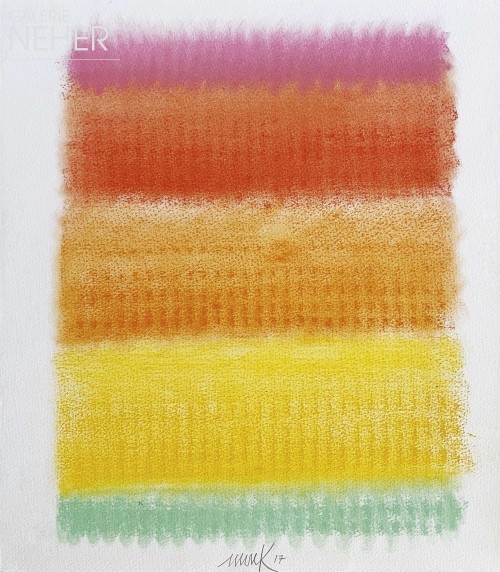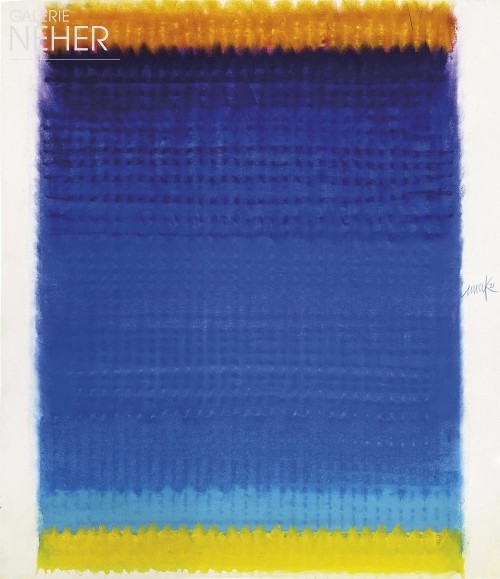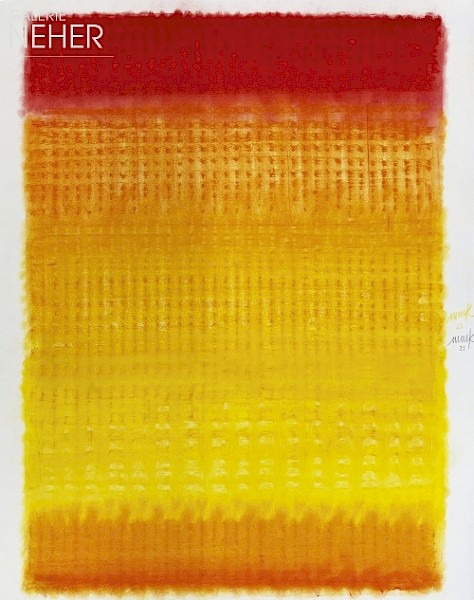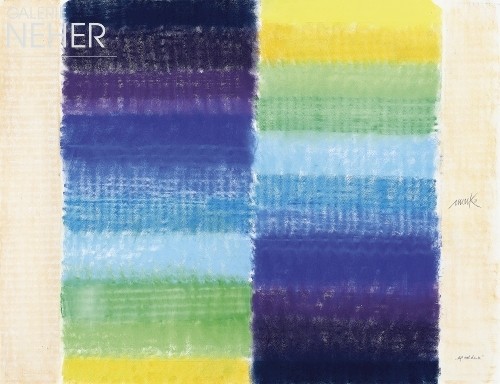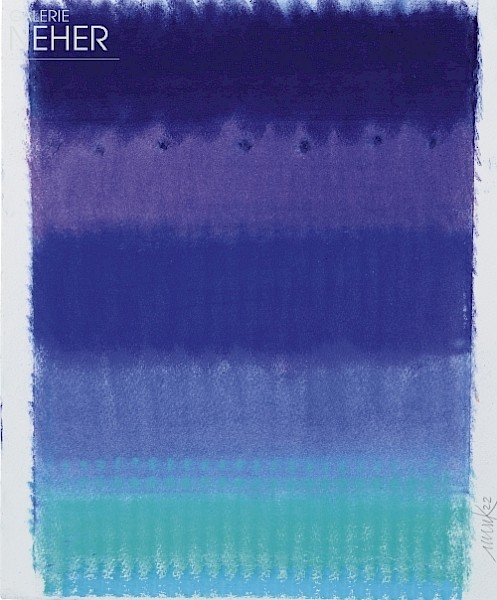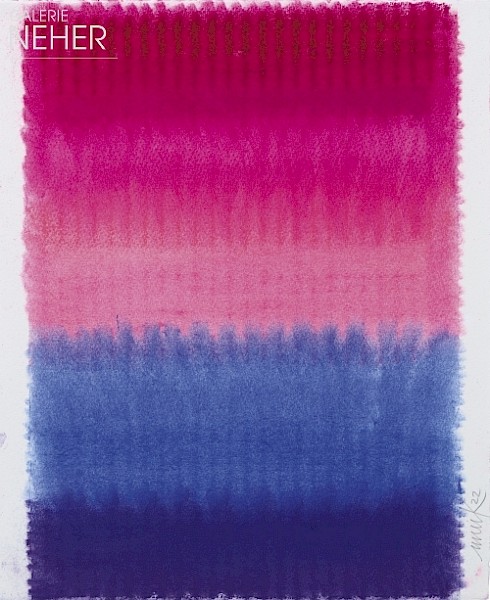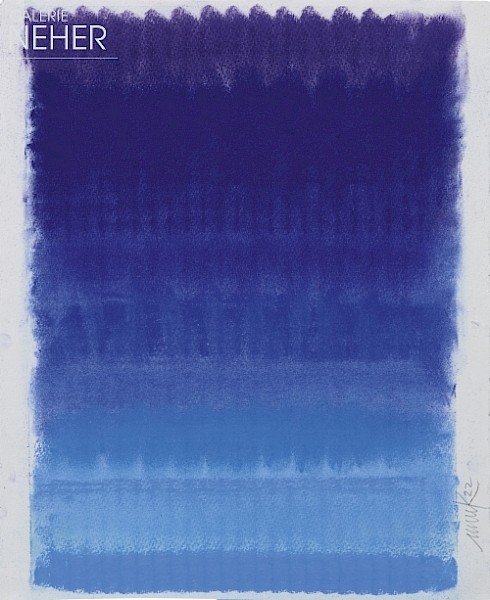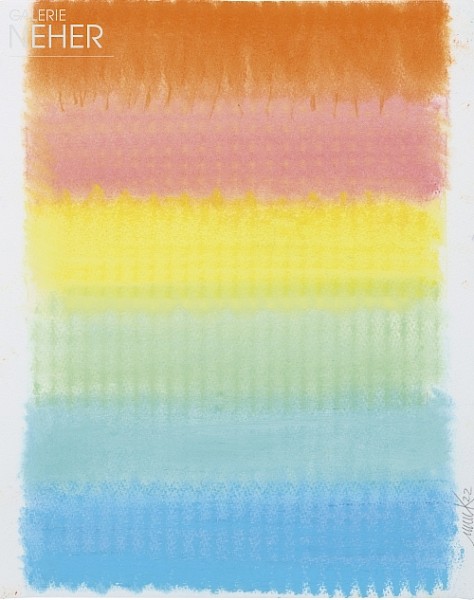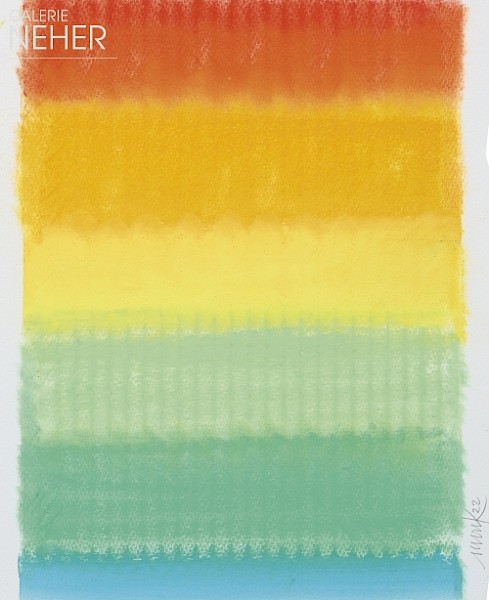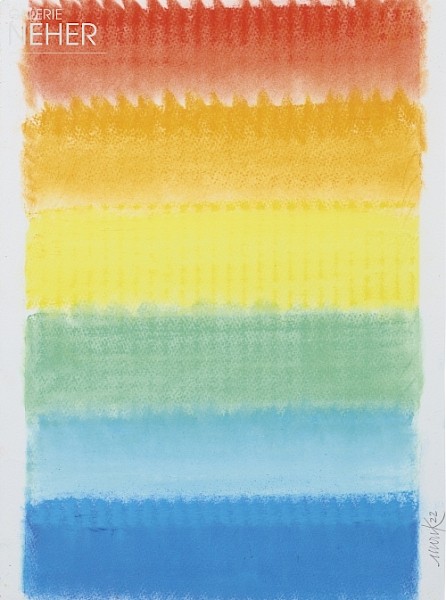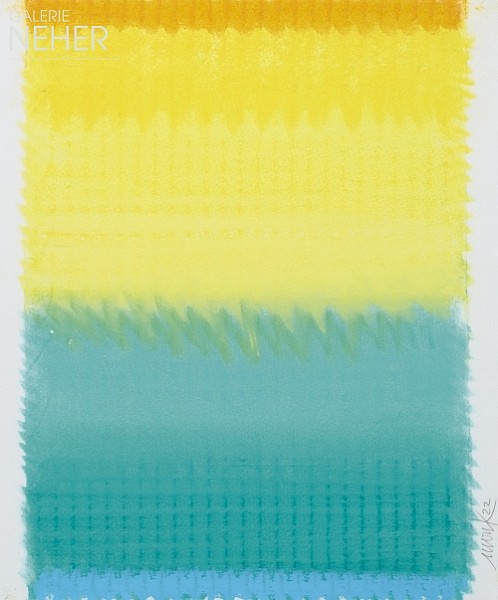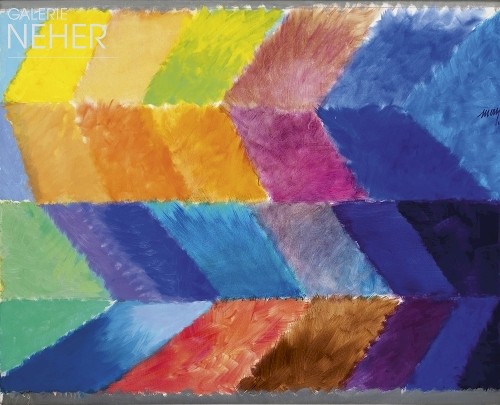Heinz Mack - Ohne Titel, Kleine Farbchromatik ((Unitled -Small Colour Chromaticism)), 2022
Pastel chalk on handmade paper
34 x 28 cm / framed 51 x 45 cm
13 x 11 inch / framed 20 x 17 inch
signed and dated bottom right: "mack 22"
signed, dated at the centre on the back: "mack 22”, with direction arrow
– with handmade craftman's frame and non-reflective, UV-absorbing glass –
N 9531
24,600 €
Provenance:
Artist's studio
Exhibitions:
Essen, Galerie Neher, Heinz Mack.... auf Papier, 2023, außerhalb des Kataloges
Heinz Mack - Ohne Titel, Kleine Farbchromatik ((Unitled -Small Colour Chromaticism)), 2022
Pastel chalk on handmade paper
34 x 28 cm / framed 51 x 45 cm
13 x 11 inch / framed 20 x 17 inch
signed and dated bottom right: "mack 22"
signed, dated at the centre on the back: "mack 22”, with direction arrow
– with handmade craftman's frame and non-reflective, UV-absorbing glass –
N 9531
24,600 €
Provenance:
Artist's studio
Exhibitions:
Essen, Galerie Neher, Heinz Mack.... auf Papier, 2023, außerhalb des Kataloges
About the work
Following the Second World War, the sculptor and painter Heinz Mack decisively helped shape German art, provided it with new conceptual impulses and opened up completely novel themes. On 24 April 1958, he founded the ZERO artist group together with Otto Piene and thus became part of the international avant garde.
The central artistic theme in the oeuvre of Heinz Mack is light, which he treats more as an aesthetic than a physical category. Associations and transcendence play a key role in Mack’s works. His colour palette is in fact based on the spectral colours, into which the initially colourless light divides when it is directed through a prism, but this perspective on Mack’s art would be far too one-sided. He creates poetic light moods beyond rationality. His colour layering mainly originates in the context of an intuitive painting process, in which colours are placed on top of one another in rapid gestures, and ideally, as Mack expressed in one of his statements: “the painting paints with me”.
The Farbchromatik 3317 is characterised by its central yellow, which radiates from out of the painting. Green and orange flank this flow of bright sun yellow, which is in turn given an inherent rhythm by interlockings and vertical structures. In this pastel work, these lines generate a lucid, even transcendent expression.
Text authored and provided by Dr Andrea Fink, art historian
The art historian, curator and freelance publicist Andrea Fink studied art history, cultural studies and humanities, modern history and philosophy in Bochum and Vienna. Doctorate in 2007 on the work of the Scottish artist Ian Hamilton Finlay. As a freelance curator and art consultant, her clients include, among others, the Kunstverein (art association) Ahlen, Kunstverein Soest, Wella Museum, Museum am Ostwall Dortmund, ThyssenKrupp AG, Kulturstiftung Ruhr, Osthaus Museum Hagen, Franz Haniel GmbH, Kunsthalle Krems, Austria.
